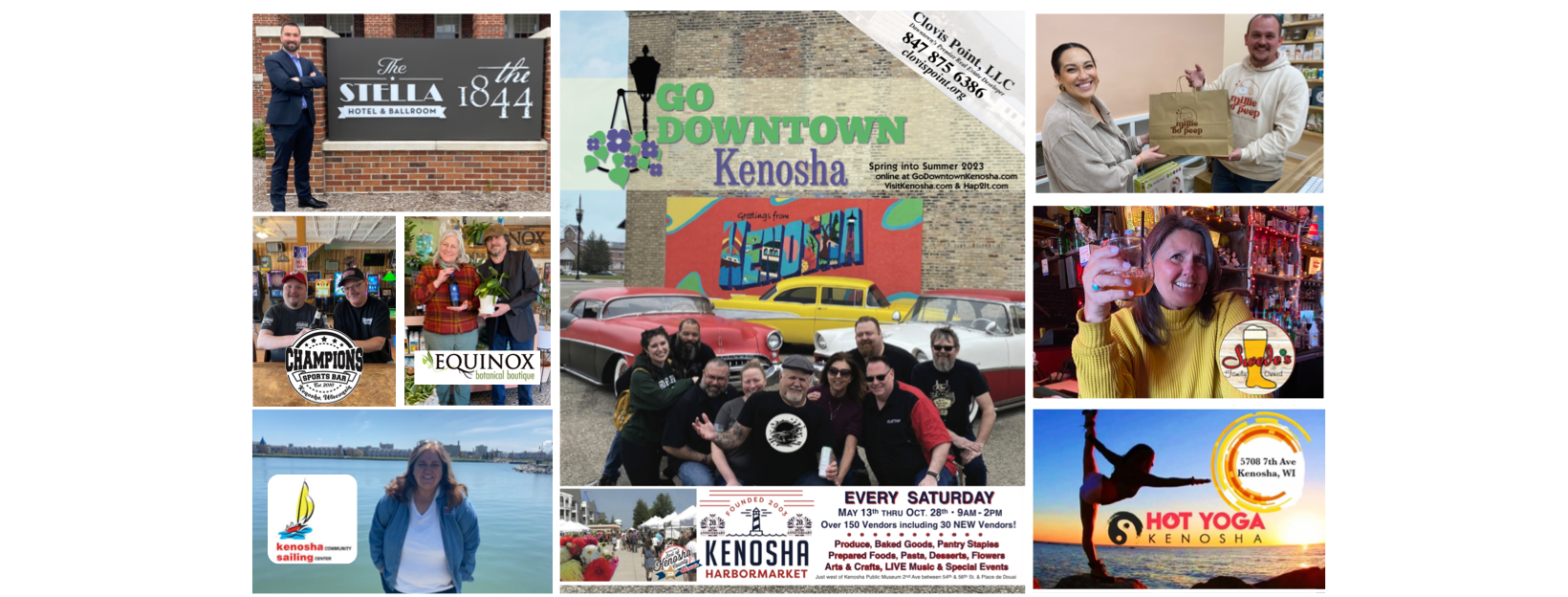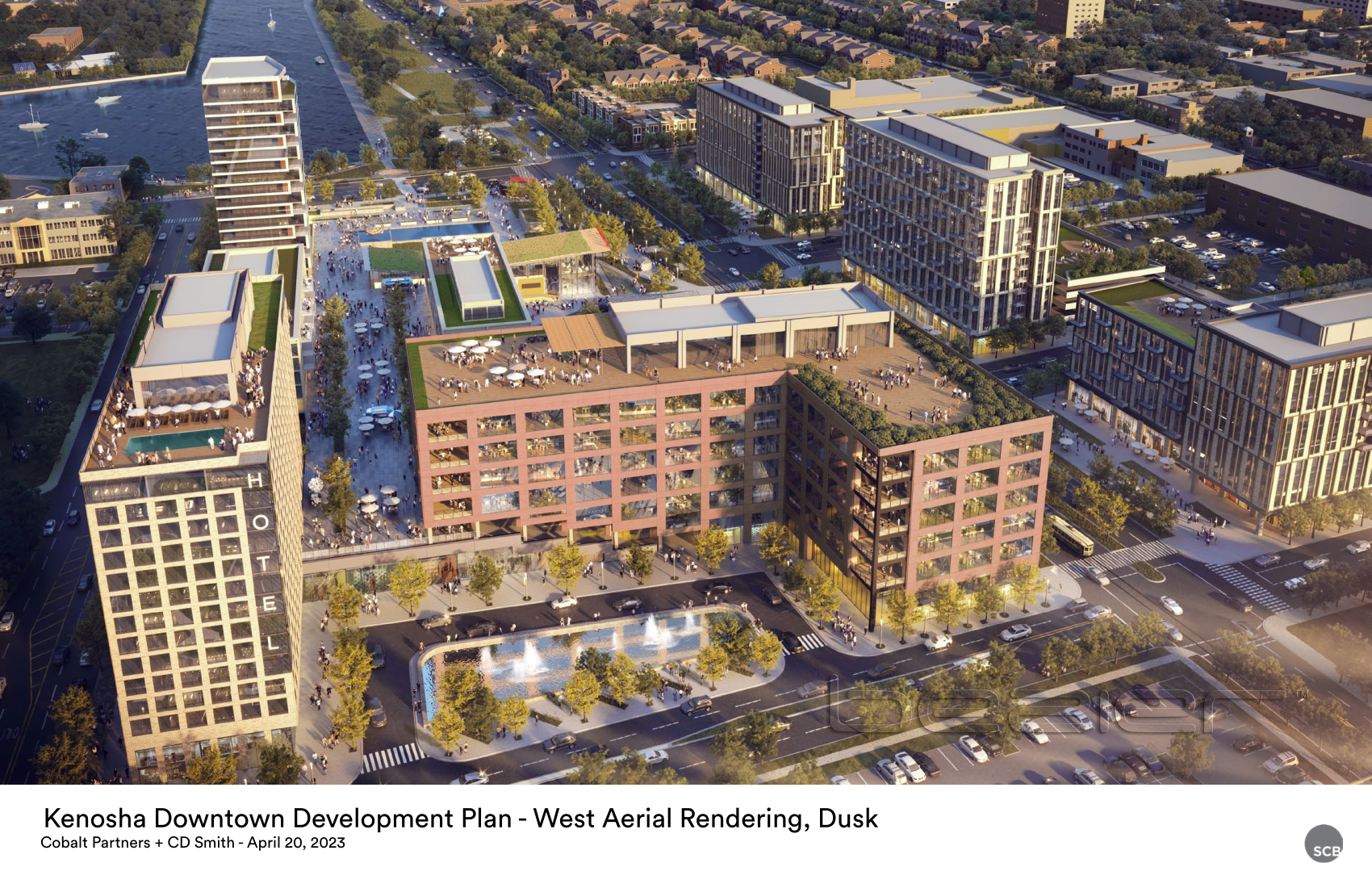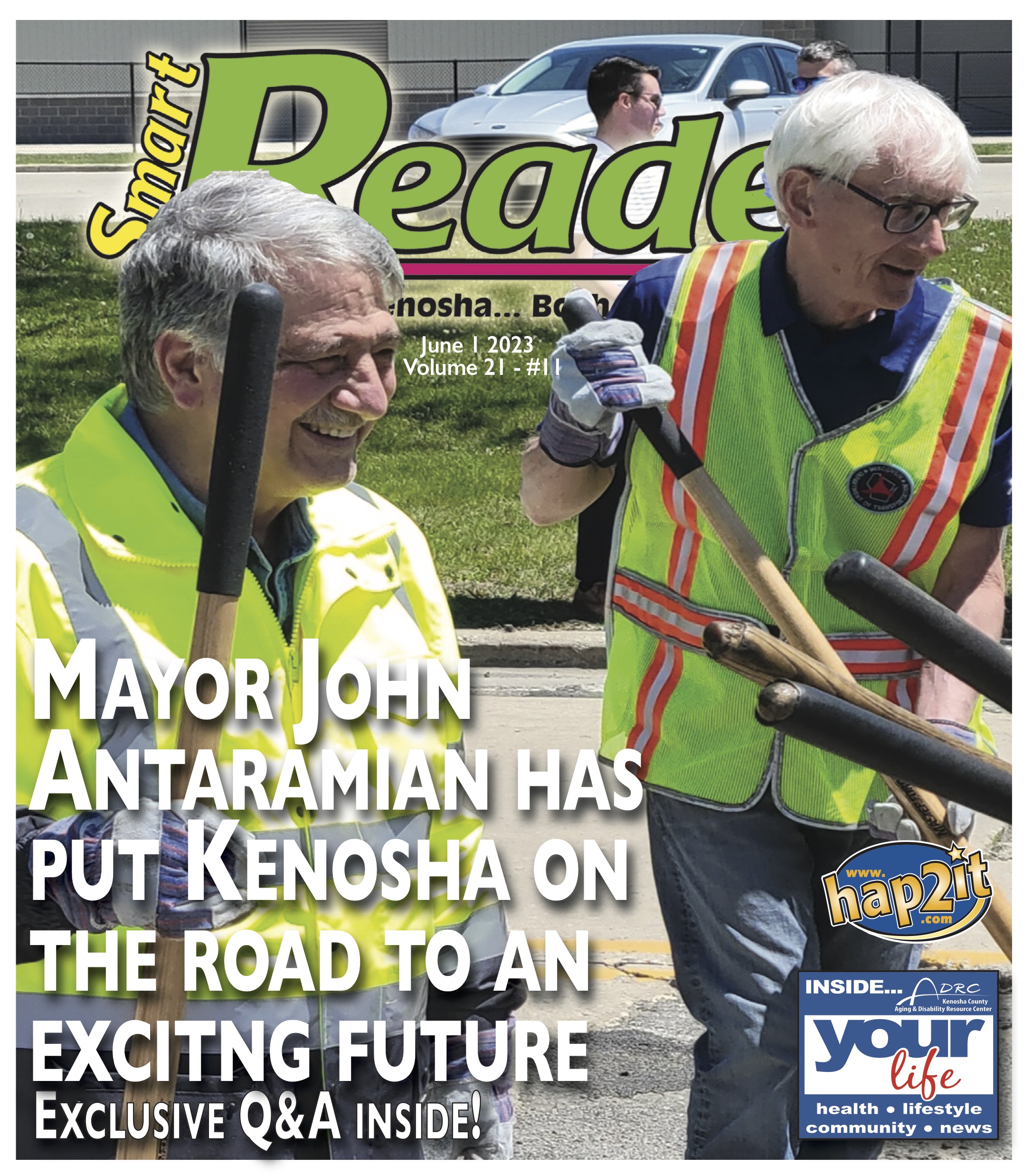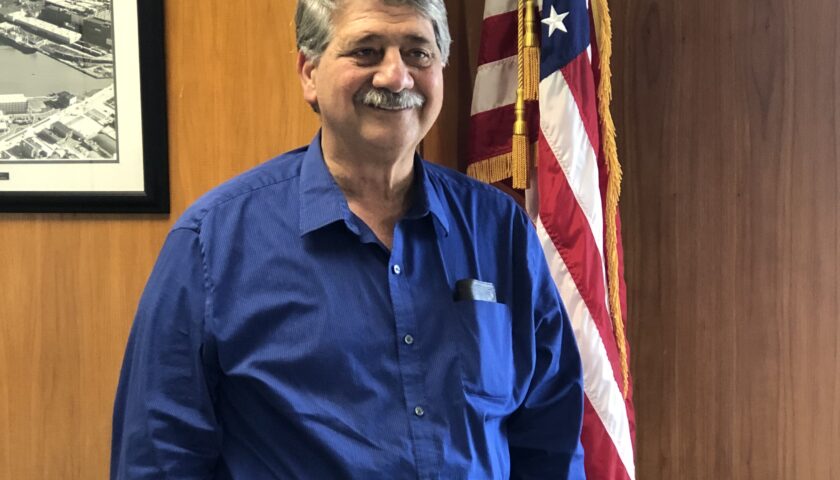Next year, after a combined total of 24 years as the mayor of Kenosha, John Antaramian will begin another chapter in his life, this time in the private sector. Last week we sat down with Mayor Antaramian for an informative Q & A session. A true visionary and always candid with his thoughts and observations, his presence will be missed.
Back in 1983 at the age of 27 you embarked on a career in politics as state representative for the 23rd and 65th district. Did you ever imagine that it would take you down the path it did?
No, I did not. At 27 I didn’t envision a career in government. I wasn’t involved in politics when I was in high school or college.
In 1992 you became the 48th mayor of Kenosha. What was the motivation and factors that lead to your decision to run?
I decided to run for Mayor for a couple of reasons. At this point, I had served in the legislature for 10 years and had achieved many of my goals there. I wanted to do more for my hometown and also spend more time with my family. At the time I served on the state finance committee, which is the budget writing committee for the state, and requires a great deal of time. I was in Madison Monday through Friday. I felt I could make a bigger/ longer lasting impact at the local level.

For the benefit of the many who didn’t call Kenosha home in the previous century, could you please tell us the state of the City when you assumed office?
The City was facing challenging times when I took office as Mayor. Jobs with the big employers in the City were on the decline, including the Chrysler plant and other companies were leaving the community. Unemployment was high and people were struggling financially. As a result, the City budget was tight and City leadership decided to defer major infrastructure projects.
Did your predecessor, Mayor Patrick Moran, have any advice for you when you succeeded him and what were your initial goals for the City during that first term?
Mayor Moran left office early and Dennis Wade was the interim Mayor, so that was a little bit of a different situation. When there is a transition to a new Mayor, it is common practice to work with the new person. After the spring election I will invite the new mayor to visit and get acquainted with the staff and ongoing projects before that person is sworn in and begins serving as mayor.
Was running for a second term a foregone conclusion?
It was an easy decision to run for a second term. When someone takes office as Mayor, they are not immediately able to start projects or quickly move forward with actions. I had a vision of some things I wanted to achieve and was just getting started during my first term in office.
After eight years as mayor you decided not to seek a third term. What went into that decision?

It was an honor to serve the community but it also was time for me to move on and let someone new take the reins. I have had my opportunity to govern the City and I am pleased with the progress that has been made under my direction. I am looking forward to spending more time with my family.
Did you support or endorse your successor, Mayor Keith Bosman?
Keith Bosman had my support and endorsement in his campaign for Mayor in 2008. Keith served as an alderperson during my first administration and was supportive. I met with Keith after the election and we talked about some of the issues the City faced.
During your eight year hiatus from politics you became a business consultant and started your own company. Can you share with us some details from that time?
During my first term in office in the 1990s, I negotiated with the state for the City to take on the redevelopment of the Chrysler lakefront site. It was one of the first brownfields in the state that was developed and became the new home for the Kenosha Public Museum, the Civil War Museum and the HarborPark condo project. Darsi Foss and Pam Mylotta with the DNR deserve a lot of credit in helping to get those projects underway. Ultimately, we helped to re-write the state laws on redeveloping brownfields. I took that experience to assist other communities with redevelopment of their brownfield sites.

When you decided to return to public life and once again became the mayor of Kenosha, looking back did you every imagine when you left office that you would ultimately return for another eight years. Why did you decide to return?
When I left office in 2008, I was ready for a re-set. I had accomplished many of my goals – including the construction of the museum campus and HarborPark, and I was excited to take that experience and advise other communities with their redevelopment needs. The work was rewarding and I enjoyed my time in the private sector. When I decided to run for Mayor again, one of the reasons I ran was because we were losing our young people. They weren’t staying in Kenosha. We looked at what we could do to encourage young people to stay here and the innovation center is one of those key elements that I believe will encourage young people to stay in Kenosha, start their own business in Kenosha, perhaps, and benefit from the different jobs we are bringing into the community. That, to me, is probably the most important thing we can accomplish.
I am looking forward to the opening of the Kenosha Emerging Leaders Academy (KELA) this fall in the Uptown neighborhood, which will provide opportunities for middle and high school youth and young adults ages 18 to 24 years old to explore their interests and develop their talents and knowledge. As one part of a plan to develop and revitalize our older neighborhoods, the City is working with local partners in youth development, education, technology, career development, and workforce preparation to ultimately create a pipeline of local talent to area colleges and future employers. Our partners include: Carthage College, the University of Wisconsin-Parkside, Herzing University, Gateway Technical College, Jockey International, Best Buy, the Kenosha YMCA, the Students Engagement thru Groups and Activities (S.E.G.A.) program, gener8tor and the Mahone Fund.
The KELA programming is critical for the young people in Kenosha, especially for our low-income and young people of color who live in neighborhoods surrounding Uptown and the Kenosha Innovation Neighborhood. This unique collaboration will provide them access to career development, higher education, training, and exposure to various careers from building trades and entrepreneurship to business and technology careers.

I am excited about the many programs and opportunities created through KELA partnerships, including the Best Buy Teen Tech Center®, where students will have access to the latest technology and develop critical skills through hands-on activities using computers, digital cameras, a music studio, virtual reality systems, and 3D printers. The Tech Center is made possibly through a partnership with Jockey International, Kenosha YMCA, and the Best Buy Foundation.
Milwaukee-based gener8tor adds an entrepreneurial component to KELA. Gener8tor brings together startup founders, investors, corporations, job seekers, universities, musicians and artists. It will offer access to business programs that develop business ideas into business start-ups or growth opportunities with an emphasis on assisting female entrepreneurs and/or people of color.
The Kenosha YMCA Teen Achievers program sponsored by Jockey, the Mahone Fund’s Career Exploration Organization (CEO) mentoring program and the S.E.G.A. program for youth employment all offer unique opportunities to our young people. On-site staff from the four higher education partners will allow students to develop early relationships with local colleges and universities.
Programming at the Academy will help to prepare youth and young adults to pursue the possibilities that will exist for them in the Kenosha Innovation Neighborhood, which is only a few blocks away and is a live, work, and play neighborhood focused on innovation, education, and work opportunities.
The Kenosha Innovation Neighborhood, located at the 107-acre former Chrysler Engine Plant property east of 30th Avenue between 52nd and 60th streets, will have infrastructure in place this year. The site will be home to LakeView Technology Academy, with construction set to begin this fall. The City partnered with Kenosha Unified School District, Gateway Technical College and the Kenosha Area Business Alliance to create a new home for the technology high school (currently located on Hwy. H in Pleasant Prairie). The new location will make it easier to access for youth in some of the older neighborhoods in the center of the City. LakeView students will have access to learning opportunities related to the businesses in the Kenosha Innovation Neighborhood.
Also planned for construction this fall is a business incubator facility, with the ability to house a number of small startups for people to start their own business. Plans call for retail, housing and a research and development facility as well.
KIN represents the future economy of the Kenosha community and puts Kenosha in a good position for technology and entrepreneurial development. In short, it’s an excellent opportunity for the community.

The second time around you were facing big deferred infrastructure needs, an eroding shoreline, aging roads and serious flooding issues in some neighborhood. Were the problems greater than initially anticipated?
The problems were significant, but I feel we have been able to address many of them. We had to determine priorities – for example, roads are scheduled for repair based on their condition, but also on the volume of traffic they carry and proximity to hospitals and schools.
A lot of progress has been made in the past seven years:
• Shoreline erosion has been addressed through revetment – the placement of large rocks to shore up the land – along the lakefront near Kennedy Park and Southport Park, as well as the harbor.
• Flooding has been managed through storm sewer improvements and storm water basin expansions in several locations, including Forest Park, the Georgetown Basin and the former Chrysler site. Other projects are focused on reducing flooding near 75th Street and 40th Avenue, as well as the neighborhood to the north of that area.
• The reconstruction of 22nd Avenue from one end of the City to the other is being completed in phases through 2026. Reconstruction of 60th Street from 38th Avenue to Green Bay Road also was scheduled in phases beginning in 2018 and is scheduled to be completed this year.
At this point, the City is on track to tackle the top remaining infrastructure projects as part of the Capital Improvement Plan through 2026.
Something no political leader can anticipate or prepare for is sudden civil unrest, something that slammed our community just three years ago. Did dealing with this event and its aftermath take years off your life?

It was a heart wrenching time in our City, to be sure. It was painful to see the destruction and the hatred directed at our City. Meanwhile, it was heartening to see how the people of Kenosha came together and helped one another at this difficult time.
As you attempted to deal with this civil unrest both national and international media came calling. What is your assessment of their coverage?
Not impressed. There was destruction, people were hurt and two men lost their lives. Emotions ran high, but as I walked through the heart of the Uptown neighborhood – which was badly damaged – you saw neighbors helping neighbors. That type of story was not covered by the out of town media.
Your thoughts regarding Trump and Biden coming to town in the aftermath of the riots? You were quoted as saying how disappointed you were that they did not respect your wishes to postpone their visits.
While I understand the instinct of the candidates to appear in Kenosha immediately after the riots, I would have preferred that they postpone their visits for a couple of weeks. Tensions were already running high, and I was concerned that this could fuel divisiveness in the community, which is why I did not meet with either candidate.
Sadly, most everyone would agree that on some level, civility towards each other is slipping away. Could you share with us your thoughts and observations as to the tone and tenor of being the mayor of a city today versus when you first took office?
It does seem that there was more civility years ago. People could disagree with one another without making it a personal attack. Regrettably, our national political leaders set a poor example of civil dialogue with whom they disagree.
In the past eight years you have embarked on a bold vision for the community and will leave office with many big projects well underway but not completed. How do you feel about that?
No matter when you leave, there are always going to be projects that are not completed. I am confident that enough groundwork has been completed and funding secured that the Downtown redevelopment and the Kenosha Innovation Neighborhood (KIN) will move forward.

When I ran for office again in 2016, one of my top concerns was engaging young people to remain in Kenosha. I felt that they needed more opportunities for job training and life skills, which lead to the development of the KIN project on the former Chrysler site. The future looks promising for young people who wish to start their own businesses, or take advantage of other jobs that are available in Kenosha.
I believe I have left the community in a better place than when I took office. Now it’s time for someone else to take the reins, and I am optimistic about the future of Kenosha.
Listen to the Mayors appearance on the Happenings Q&A Podcast
Apple Podcast CLICK HERE
Spotify CLICK HERE
Q&A by Frank Carmichael
Edited by Kris Kochman
Featured image by Donny Stancato



